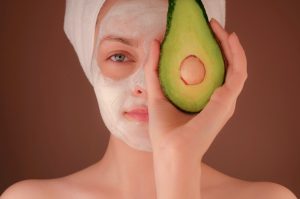Good skincare is based on using the best product. Good quality products look better but poor-quality products can be ineffective and even cause harm. Check this article for more info about morning skincare routine.
Choose wisely and adapt products as your skin changes
“Curating an effective skincare routine is all about choosing the right products at the right time and applying them in the right order. You might already know your general skin type, but for serums and treatments, choose products that are going to target your particular concerns.

Layer from lightest to heaviest formulas, Once armed with the products that make up your routine, you should work from the lightest to the heaviest. Start by putting the thinnest, fastest-absorbing product on your face first and layer the next heaviest over it, then the next, so that the thickest formula ends up on top (followed by sunscreen and/or a tinted SPF). As a general rule of thumb, apply your products in this order: cleanser, toner/essence, treatment/mask, serum, eye cream, moisturizer, oil, SPF. Sunscreen always goes last, and the only thing that you should layer over sunscreen is powder, concealer, or foundation.”
Make sure to use an essence
An essence is a key post-cleanse step that not only nourishes, smoothes and pH balances your skin, but also turbo-charges every other product you put on top of it, by softening the epidermal layers to allow faster penetration of actives.
Double up on Vitamin C
Topical vitamin C has multiple benefits for your skin: it’s radiance-boosting; equalizes uneven skin tone; improves your skin’s texture; helps to fight fine lines and fade acne scars; brightens skin and helps repair damage from UV rays; improves the appearance of pigmentation; and over the longer-term, it helps to kick natural collagen production up a notch.
Hyaluronic acid should be a staple
Hyaluronic acid can be found in everything from serums to creams to capsules to sheet masks. And it’s powerful – so you probably don’t need it in more than one layer of your morning or evening routine.
If using hyaluronic acid serums, apply onto cleansed skin under your day or night moisturizer. If opting for hyaluronic acid-infusemoisturizerse before SPF and/or foundation. And apply hyaluronic acid sheet masks after deep cleansing your skin and before apply.
Comparison of thick and thin skin layer
- Thick skin:
They have five layerlayershe epidermises. Thick skin has a thinner dermis than thin skin and does not contain hairs, sebaceous glands, or apocrine sweat glands. Thick skin is only found in areas where there is a lot of abrasion – fingertips, palms, and the soles of your feet.
- Thin skin:
They have four-layer in the epidermis. The stratum lucidum layer is absent. Thin skin has a thicker dermis than thick skin, which makes thin skin easier to suture if it gets damaged. Thin skin also has fewer eccrine/merocrine sweat glands.

Skin has three layers:
- The epidermis, the outermost skin layer of skin, provides a waterproof barrier and creates our skin tone.
- The dermis, beneath the epidermis, contains tough connective tissue, hair follicles, and sweat glands.
- The deeper subcutaneous tissue (hypodermis) is made of fat and connective tissue.